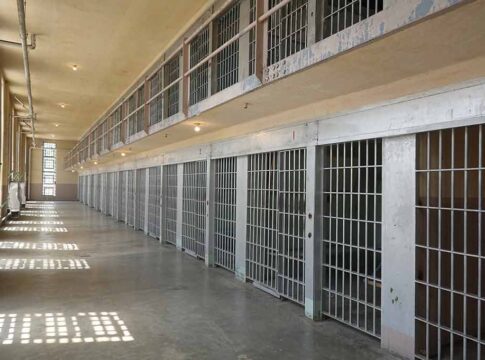President Donald Trump has unveiled a bold plan to reopen Alcatraz prison to house criminal illegal aliens. The plan has already generated significant reaction across the political spectrum, while critics question its feasibility and legal foundations. Could there be any legal challenges with California officials?
Trump’s Vision for Alcatraz
President Donald Trump has announced plans to “REBUILD, AND OPEN ALCATRAZ,” positioning the infamous former prison as a solution for detaining criminal illegal aliens when activist judges block deportation efforts. The announcement came through Trump’s Truth Social platform, where he emphasized the need to protect Americans from “vicious, violent, and repeat Criminal Offenders” who he describes as “the dregs of society.”
Trump’s directive would involve multiple federal agencies, including the Bureau of Prisons, the Department of Justice, the FBI, and the Department of Homeland Security, working together to implement this controversial plan. The president stated, “We will no longer be held hostage to criminals, thugs, and Judges that are afraid to do their job and allow us to remove criminals, who came into our Country illegally.”
REBUILD, AND OPEN ALCATRAZ! For too long, America has been plagued by vicious, violent, and repeat Criminal Offenders, the dregs of society, who will never contribute anything other than Misery and Suffering. When we were a more serious Nation, in times past, we did not hesitate… pic.twitter.com/u1jOCMXeW5
— Donald J. Trump (@realDonaldTrump) May 5, 2025
Historical Significance of the Rock
Alcatraz Island, known colloquially as “The Rock,” has a storied history that began as a military installation before its transformation into one of America’s most notorious federal prisons. The facility operated as a maximum-security federal penitentiary from 1934 to 1963, housing infamous criminals including Al Capone, George “Machine Gun” Kelly, and James “Whitey” Bulger.
The prison gained its reputation as virtually escape-proof due to its location in the cold, turbulent waters of San Francisco Bay, with the prevailing currents making successful escape nearly impossible. President John F. Kennedy ordered the closure of Alcatraz in 1963, citing the high operational costs associated with maintaining the isolated facility, including the expenses of transporting food, water, and supplies to the island.
Mother fuckers in San Francisco watching four inmates escape the reopened Alcatraz in a plane made of cloth, air vents and sheet metal crash into the Golden Gate Bridge https://t.co/QaXsDq5GTU pic.twitter.com/vguU1vaTWk
— Matthew (@NEEMOAHTOAD) May 4, 2025
Strategic Approach to Immigration Enforcement
Trump’s proposal appears designed to counter judicial obstacles that have frequently impeded immigration enforcement actions in recent years. Federal judges, particularly those in districts with progressive leanings, have repeatedly blocked or limited deportation efforts, creating challenges for immigration authorities attempting to remove criminal aliens from the country.
By reopening Alcatraz, Trump aims to establish an alternative measure for addressing criminal illegal aliens when deportation is not immediately possible. The facility would serve not only as a practical detention center but also as a potent symbol of law and order, potentially deterring criminal activity among those who might otherwise expect to remain in the country despite deportation orders.
The plan aligns with Trump’s broader immigration platform, which emphasizes stronger border control and more aggressive interior enforcement measures. Rebuilding Alcatraz would represent a significant federal investment, requiring substantial modernization of the historic facility to meet contemporary detention standards while preserving its symbolic significance in American criminal justice history.


